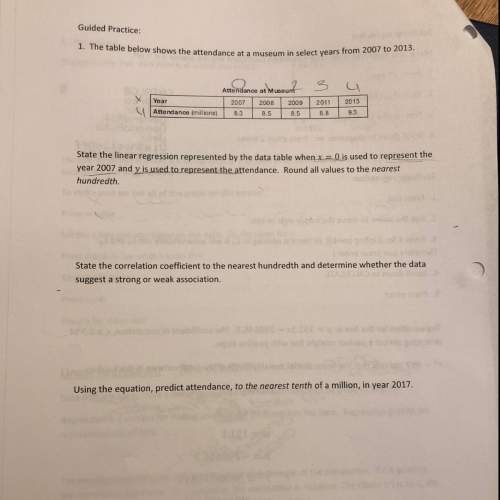
Mathematics, 21.05.2021 19:10 dashia84
PLI HELP IS FOR A TEST
The vertices of quadrilateral MNPQ are M(28, 1), N(3, 4), P(7, 21), and Q(24, 24).
a. The coordinates of M' are (16,4) after a translation. State the translation rule.
b. Use GeoGebra to complete a 90° rotation around the origin

Answers: 2


Other questions on the subject: Mathematics

Mathematics, 20.06.2019 18:02, Halieyrobinson3003
Julia measured the high temperature in her town for one week. using the chart above, find the mean absolute deviation for the high temperatures. round your answer to the nearest tenth. be sure to show your work for finding: the mean of the set of data the distance of each number from the mean the mean absolute deviation
Answers: 2

Mathematics, 21.06.2019 20:00, rogelionavarro200314
Evaluate the discriminant of each equation. tell how many solutions each equation has and whether the solutions are real or imaginary. x^2 + 4x + 5 = 0
Answers: 2

Mathematics, 21.06.2019 23:10, rodrickahammonds
Which expression is equivalent to -12(3x-3/4)
Answers: 2

Mathematics, 22.06.2019 03:30, Sanchezj104
Use a calculator to verify that σ(x) = 62, σ(x2) = 1034, σ(y) = 644, σ(y2) = 93,438, and σ(x y) = 9,622. compute r. (enter a number. round your answer to three decimal places.) as x increases from 3 to 22 months, does the value of r imply that y should tend to increase or decrease? explain your answer. given our value of r, y should tend to increase as x increases. given our value of r, we can not draw any conclusions for the behavior of y as x increases. given our value of r, y should tend to remain constant as x increases. given our value of r, y should tend to decrease as x increases.
Answers: 3
You know the right answer?
PLI HELP IS FOR A TEST
The vertices of quadrilateral MNPQ are M(28, 1), N(3, 4), P(7, 21), and Q(24...
Questions in other subjects:





Mathematics, 18.09.2021 04:00

English, 18.09.2021 04:00

Social Studies, 18.09.2021 04:00

Biology, 18.09.2021 04:00

Mathematics, 18.09.2021 04:00




